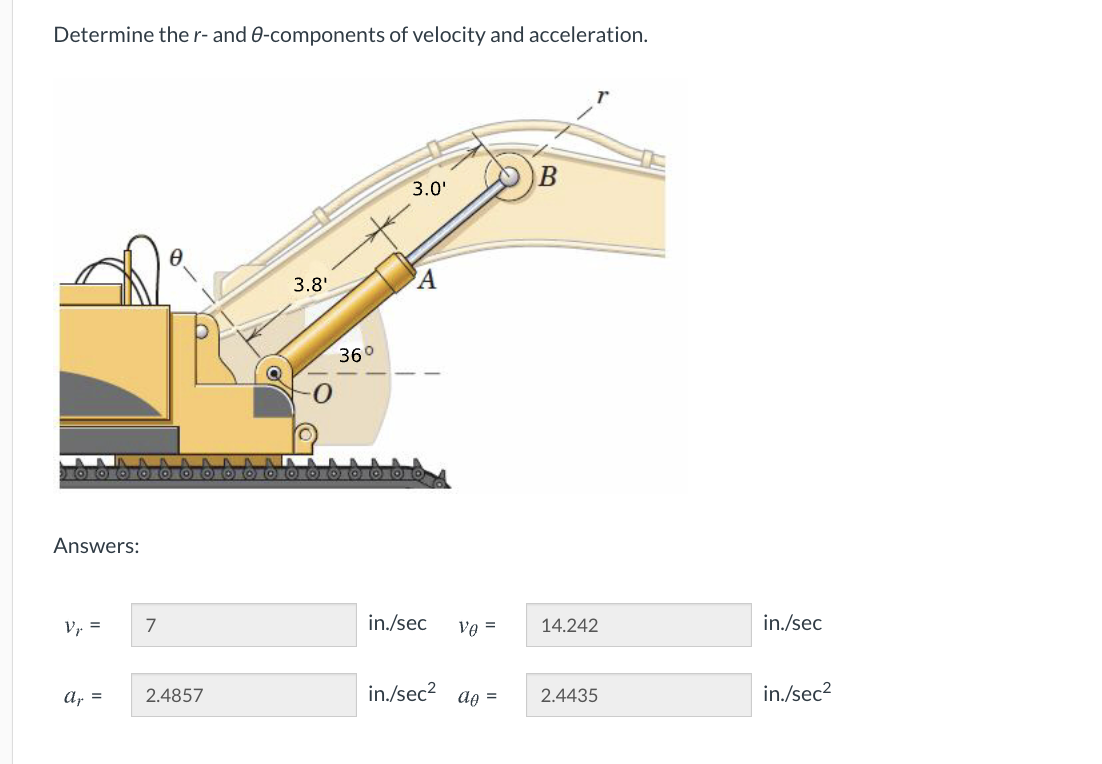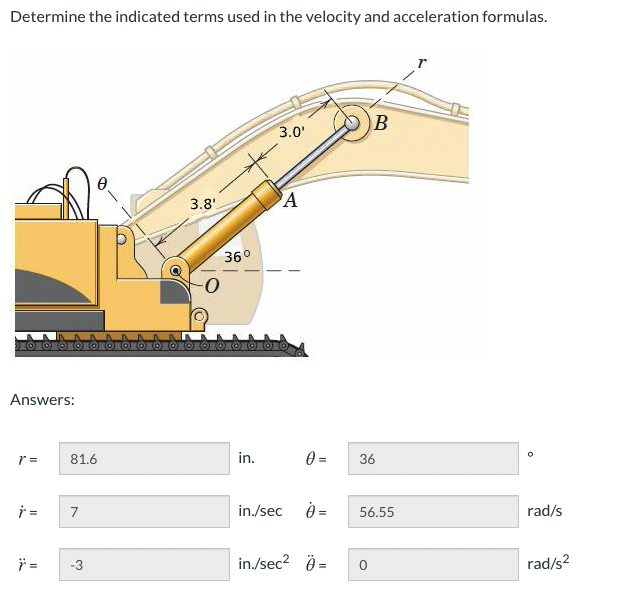Consider the portion of an excavator shown. At the instant under consideration, the hydraulic cylinder is extending at a rate of 7 in./sec, which is decreasing at the rate of 3 in./sec every second. Simultaneously, the cylinder is rotating about a horizontal axis through O at a constant rate of 10 deg/sec. Determine the velocity v and acceleration a of the clevis attachment at B.
Consider the portion of an excavator shown. At the instant under consideration, the hydraulic cylinder is extending at a rate of 7 in./sec, which is decreasing at the rate of 3 in./sec every second. Simultaneously, the cylinder is rotating about a horizontal axis through O at a constant rate of 10 deg/sec. Determine the velocity v and acceleration a of the clevis attachment at B.
International Edition---engineering Mechanics: Statics, 4th Edition
4th Edition
ISBN:9781305501607
Author:Andrew Pytel And Jaan Kiusalaas
Publisher:Andrew Pytel And Jaan Kiusalaas
Chapter1: Introduction To Statics
Section: Chapter Questions
Problem 1.19P: Plot the earths gravitational acceleration g(m/s2) against the height h (km) above the surface of...
Related questions
Question
100%
Consider the portion of an excavator shown. At the instant under consideration, the hydraulic cylinder is extending at a rate of 7 in./sec, which is decreasing at the rate of 3 in./sec every second. Simultaneously, the cylinder is rotating about a horizontal axis through O at a constant rate of 10 deg/sec. Determine the velocity v and acceleration a of the clevis attachment at B.
*********************ANSWER THIS PART ONLY************
Write the velocity and acceleration as vectors.
v = (______ er + ______ eθ) in./sec
a = ( ______er + ______ eθ) in./sec2
v = (______ er + ______ eθ) in./sec
a = ( ______er + ______ eθ) in./sec2

Transcribed Image Text:Determine the r- and 0-components of velocity and acceleration.
3.0'
3.8'
36°
O OKO
Answers:
V, =
7
in./sec
Ve =
14.242
in./sec
a, =
2.4857
in./sec2
de =
2.4435
in./sec?

Transcribed Image Text:Determine the indicated terms used in the velocity and acceleration formulas.
3.0'
3.8'
A
36°
Answers:
r =
81.6
in.
0 =
36
=
7
in./sec
=
56.55
rad/s
-3
in./sec2 =
rad/s?
Expert Solution
This question has been solved!
Explore an expertly crafted, step-by-step solution for a thorough understanding of key concepts.
Step by step
Solved in 2 steps with 2 images

Knowledge Booster
Learn more about
Need a deep-dive on the concept behind this application? Look no further. Learn more about this topic, mechanical-engineering and related others by exploring similar questions and additional content below.Recommended textbooks for you

International Edition---engineering Mechanics: St…
Mechanical Engineering
ISBN:
9781305501607
Author:
Andrew Pytel And Jaan Kiusalaas
Publisher:
CENGAGE L

International Edition---engineering Mechanics: St…
Mechanical Engineering
ISBN:
9781305501607
Author:
Andrew Pytel And Jaan Kiusalaas
Publisher:
CENGAGE L